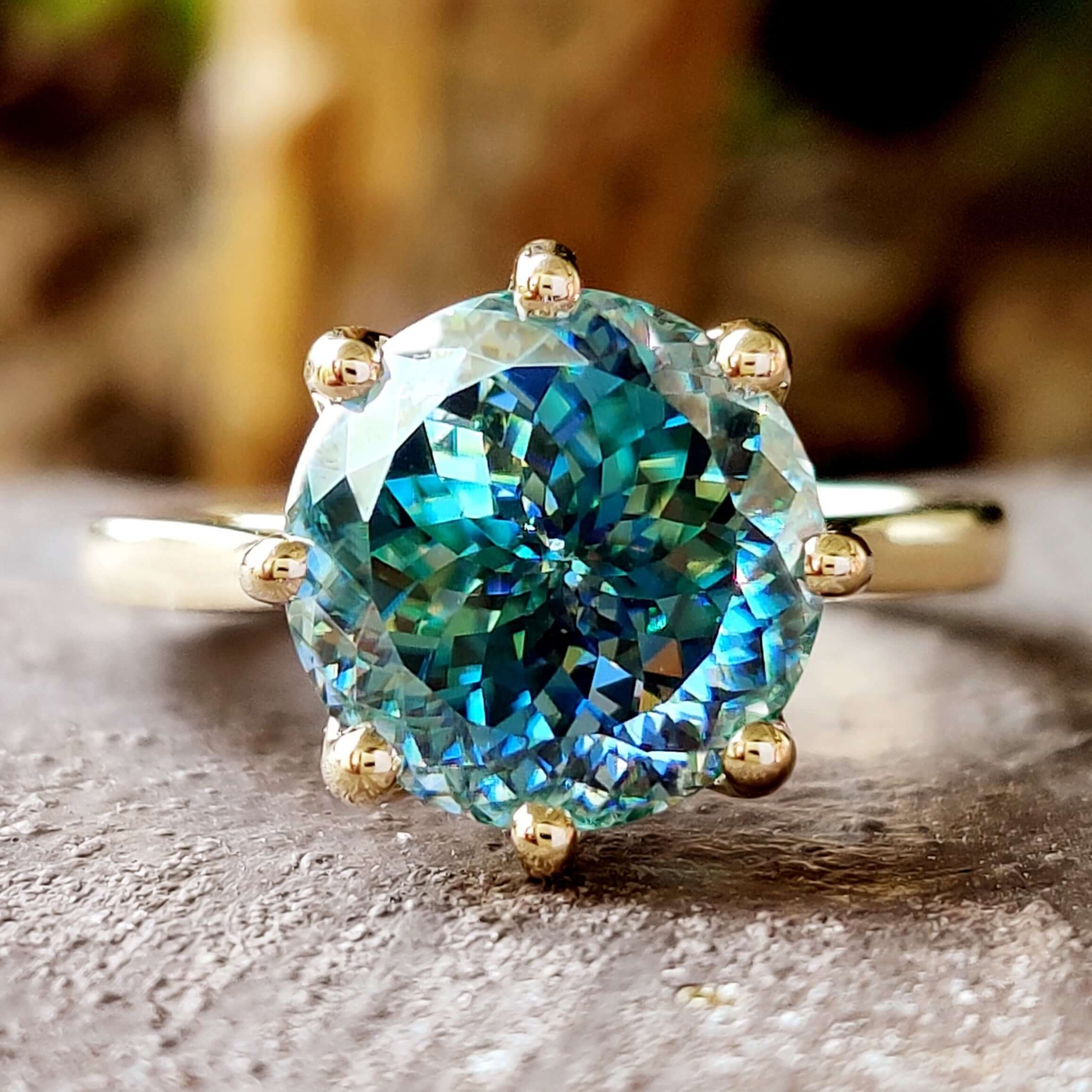
In the world of fine jewelry, diamonds have long been the reigning champions. But what if there were another gemstone that offered comparable brilliance, durability, and beauty without the hefty price tag? Enter moissanite. This article explores the wonders of moissanite, its origins, properties, and why it might just be the perfect choice for your next piece of jewelry.
Table of Contents
The Origin and History of Moissanite
Moissanite, discovered over a century ago by Nobel Prize-winning chemist Dr. Henri Moissan, is a gemstone that originally comes from the stars. Dr. Moissan found minute particles of this crystal in a meteor crater in Arizona in 1893. Initially mistaken for diamonds, these crystals were later identified as silicon carbide, a compound entirely different in structure from diamonds.
Fast forward to the late 20th century, and advancements in technology made it possible to create moissanite in laboratories. This breakthrough allowed the gemstone to be produced ethically and sustainably, providing a stunning alternative to traditional diamonds.
Properties and Characteristics of Moissanite
One of the key attributes that set moissanite apart from other gemstones is its incredible brilliance. Moissanite has a refractive index of 2.65 to 2.69, which is higher than that of diamonds. This means moissanite sparkles more intensely, reflecting light in a dazzling display of fire and brilliance.
In terms of hardness, moissanite ranks 9.25 on the Mohs scale, just below diamonds, which rank at 10. This makes moissanite extremely durable and resistant to scratches, perfect for everyday wear in engagement rings and other fine jewelry.
Additionally, moissanite is known for its excellent clarity and colorless to near-colorless appearance. While natural moissanite can exhibit slight color variations, lab created diamonds is crafted to be consistently brilliant and clear.
Moissanite vs. Diamond: A Comparative Analysis
When considering moissanite as an alternative to diamonds, it’s essential to understand the differences and similarities between the two gemstones.
- Cost: One of the most significant advantages of moissanite is its cost-effectiveness. Moissanite offers similar visual properties to diamonds at a fraction of the price, making it an attractive option for budget-conscious buyers.
- Brilliance: Moissanite’s higher refractive index means it can sparkle even more than diamonds, providing an eye-catching display of light and color.
- Durability: While diamonds are the hardest known natural material, moissanite is exceptionally durable and suitable for daily wear, making it a practical choice for engagement rings and other jewelry pieces.
- Ethics: Lab-created moissanite is a more ethical and sustainable choice compared to diamonds, which can sometimes be associated with conflict and unethical mining practices.
- Thermal Conductivity: Moissanite conducts heat differently from diamonds, which is why specialized equipment is needed to distinguish between the two. This property makes moissanite unique and valuable in its own right.
Choosing Moissanite for Your Jewelry
With its exceptional properties and ethical appeal, moissanite is an excellent choice for various types of jewelry. Here are some considerations when choosing moissanite:
- Engagement Rings: Moissanite’s brilliance and durability make it a perfect centerpiece for engagement rings. Its affordability also means you can opt for a larger stone without breaking the bank.
- Earrings and Pendants: The sparkling nature of moissanite lends itself well to earrings and pendants, offering a stunning and affordable way to add some dazzle to your jewelry collection.
- Custom Jewelry: Moissanite’s versatility allows for custom designs, letting you create unique pieces that reflect personal style and taste.
Caring for Your Moissanite Jewelry
Maintaining the brilliance and beauty of moissanite jewelry is relatively straightforward. Here are some tips to keep your moissanite pieces looking their best:
- Cleaning: Regular cleaning with mild soap and warm water will help maintain the stone’s sparkle. Use a soft brush to gently clean the gemstone and setting.
- Storage: Store your moissanite jewelry separately from other pieces to avoid scratches. Use soft pouches or lined jewelry boxes for protection.
- Professional Check-ups: Periodically have your moissanite jewelry inspected by a professional jeweler to ensure the setting is secure and the stone remains in excellent condition.
Conclusion: Is Moissanite Right for You?
In conclusion, moissanite offers a compelling alternative to diamonds, combining exceptional brilliance, durability, and ethical appeal. Whether you’re in the market for an engagement ring, a statement piece, or
simply adding to your jewelry collection, moissanite provides a beautiful, cost-effective, and sustainable option.
Moissanite raises an important question: why spend significantly more on a diamond when you can have a gemstone that offers comparable beauty and performance at a fraction of the price? The answer may vary depending on personal preferences and values, but for many, moissanite presents a modern solution that aligns with contemporary ideals of sustainability and financial prudence.
Incorporating 모이사나이트 into your jewelry collection not only enhances your style but also makes a statement about choosing brilliance and value without compromise. Consider exploring the world of moissanite for your next jewelry purchase—you might just find that this sparkling gemstone meets all your needs and more.


